This weekend, Superbowl 58 will be played in Las Vegas, Nevada. While the Super Bowl is just the latest event to take place in this vibrant city, many know that it has been home to a growing population for many years. Home to a desirable climate and vibrant entertainment and hospitality industries, this city has a lot to offer; but its biggest limitation for growth might just be its geographical features.
When gambling was legalized in 1931, Las Vegas boasted a population of just over 8,500 people. It wasn’t until nearly two decades later that the population of Las Vegas really boomed, hitting 48,000 residents in 1950. The population doubled each decade that followed until the 1980s. The city’s population has been steadily increasing, driven by factors such as job opportunities, a desirable climate and an influx of new residents. The maps below show the population in 1970, 1990, 2010 and today.
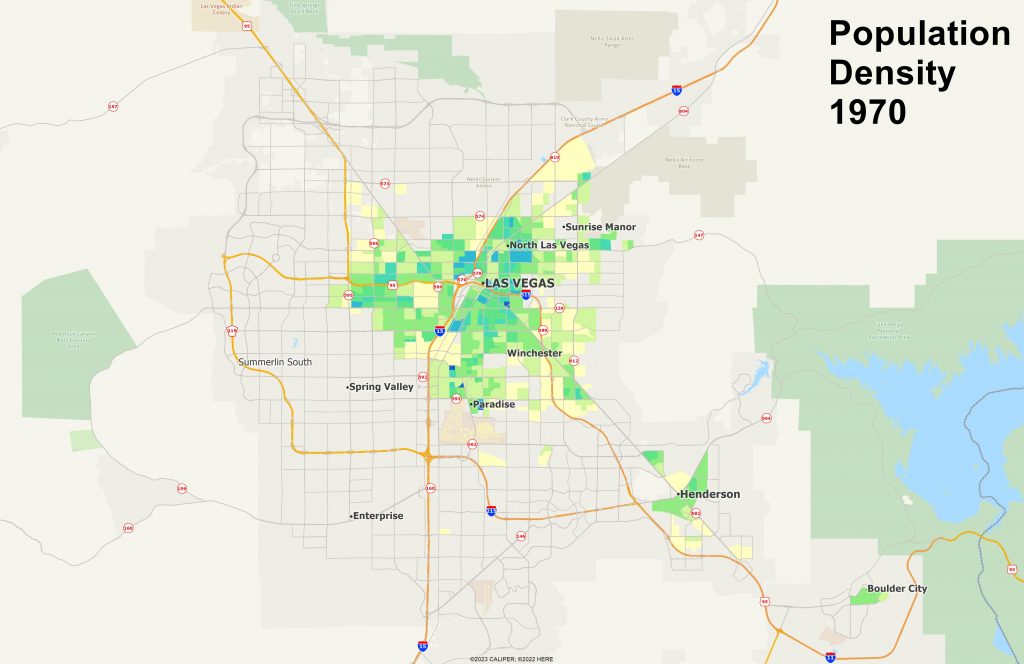
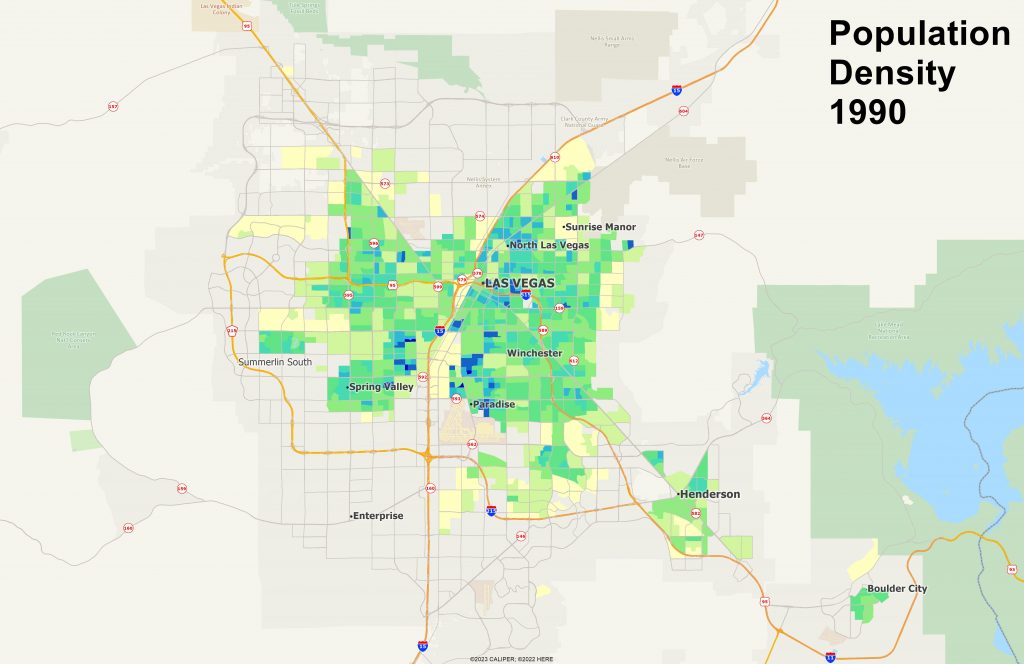
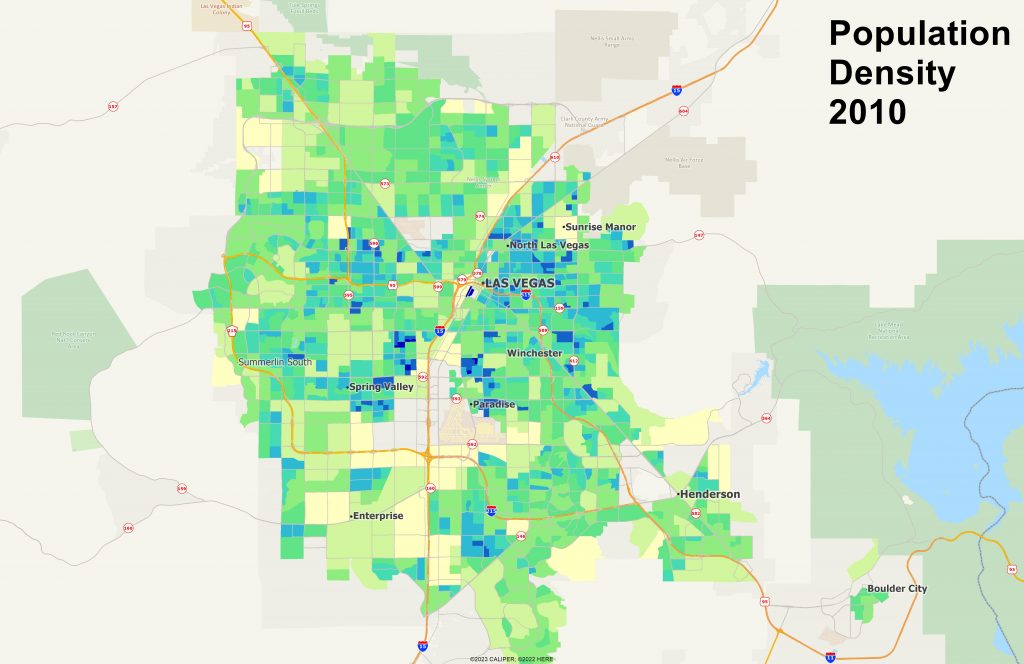
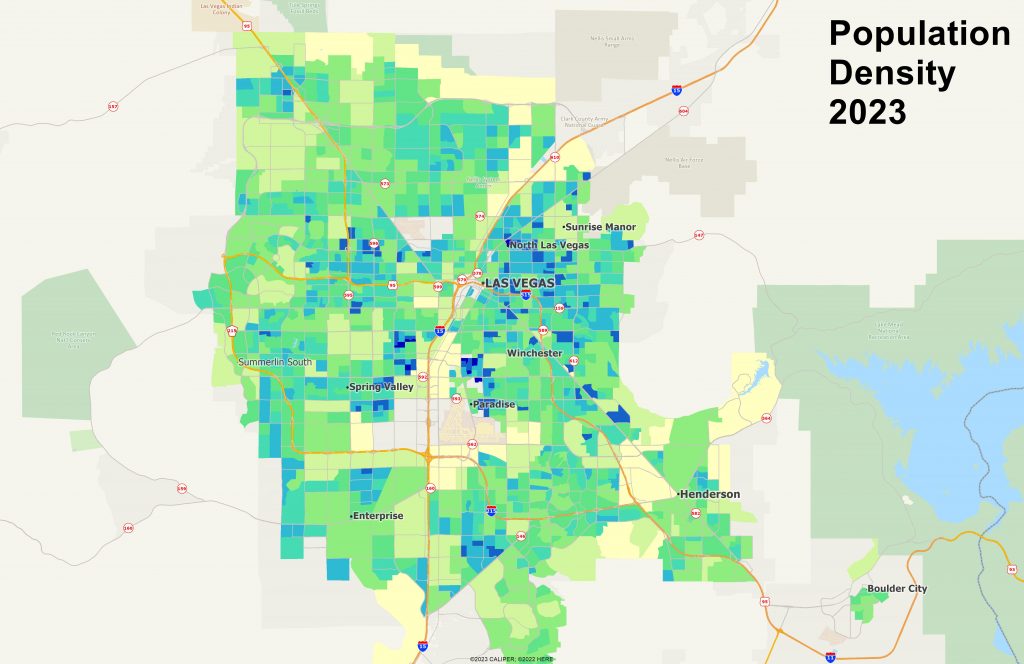
The employment landscape in Las Vegas is closely tied to its thriving tourism and hospitality sectors, which are major contributors to the city’s economy. With an ever-expanding array of hotels, resorts, and entertainment venues, the need for individuals to staff these businesses grows. A large percentage of the residents, 13.2%, work in the food and hospitality industry, and 7.5% work in arts and entertainment. Nationally, 6.4% of the workforce is employed in food and hospitality, and just 1.9% work in arts and entertainment. Outside of these industries, notable business headquartered in Las Vegas include Zappos, Allegiant Airlines and AMERCO (parent company of U-Haul).
While Las Vegas is a booming market, the geography and topography might prove limiting. There are mountains in most directions, with the Boulder dam, a national park, an Indian reservation to the Northwest, and the Nellis Air Force Base to the Northeast further limiting opportunities for expansion. There may be some room for housing developments on the south side along the I-15 corridor, towards Utah along the I-15 North, and the south of Boulder on the US-95 corridor. The map below shows these limitations on a topographical map.
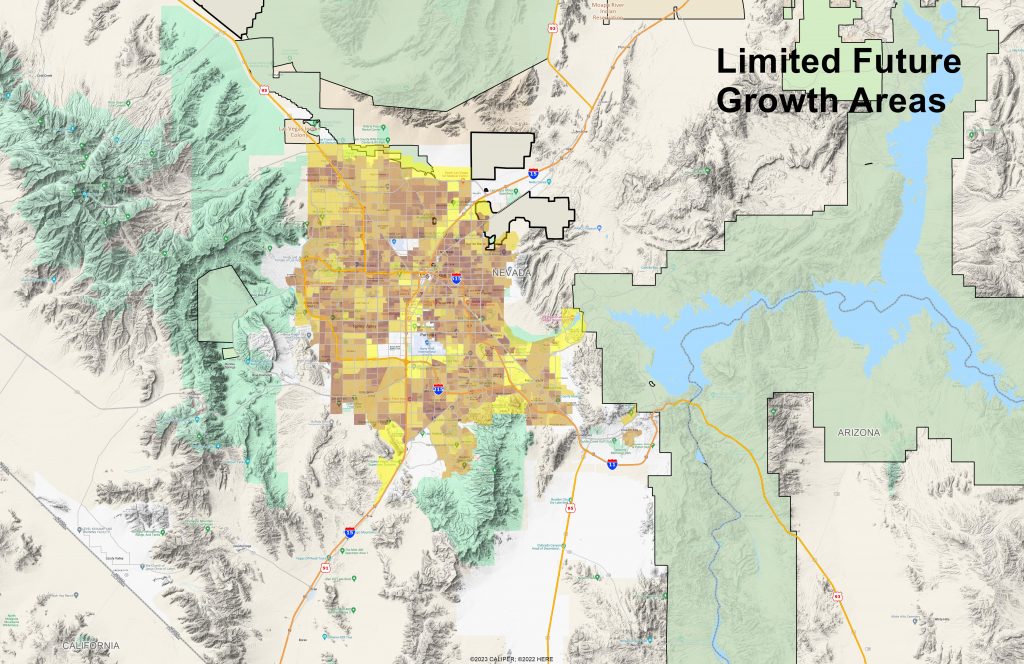


Recent Comments